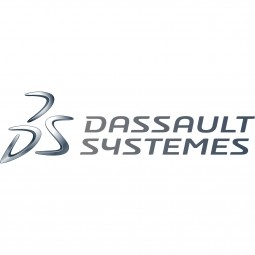Customer Company Size
Large Corporate
Region
- America
Country
- United States
Product
- 3DEXPERIENCE Platform
Tech Stack
- CATIA Generative Design Engineering
- 3D Printing
Implementation Scale
- Departmental Deployment
Impact Metrics
- Productivity Improvements
- Innovation Output
Technology Category
- Platform as a Service (PaaS) - Application Development Platforms
Applicable Industries
- Aerospace
- Education
Applicable Functions
- Product Research & Development
Use Cases
- Digital Twin
- Virtual Prototyping & Product Testing
Services
- Software Design & Engineering Services
About The Customer
Wichita State University (WSU) is a public state university dedicated to being recognized as the model for applied learning and research. It has 15,000 enrollments per year and is located in Wichita, Kansas. The university's ambition is to expose students to industry-related projects that provide them with learning that is not traditionally found in a textbook. They aim to be a model for applied learning and an economic driver for the community – where students can transition back and forth between the academic world and industry to work on real-world projects while they’re in school. The National Institute for Aviation Research (NIAR) at WSU integrates business, government, and university entities in cooperative efforts to advance aviation technology.
The Challenge
The challenge was to compress the development of a system of work for an Unmanned Aerial System (UAS) down to 90 days while providing the students of Wichita State University (WSU) a greater experience using real-life industry tools. The goal was to expose students to industry-related projects that provide them with learning that is not traditionally found in a textbook. The university aimed to be a model for applied learning and an economic driver for the community – where students can transition back and forth between the academic world and industry to work on real-world projects while they’re in school. The first fully collaborative project at the 3DEXPERIENCE Center is an unmanned aerial system (UAS), or drone, designed to handle multiple missions including search and rescue. The UAS was entirely designed and manufactured using Dassault Systèmes’ 3DEXPERIENCE platform and its Aerospace & Defense industry solutions.
The Solution
The National Institute for Aviation Research (NIAR) at WSU partnered with Dassault Systèmes’ to create the first 3DEXPERIENCE Center as part of its newly created Innovation Campus with the 3DEXPERIENCE platform at its heart. The 3DEXPERIENCE platform allows students to efficiently manage composite design on complex surfaces. The team used CATIA Generative Design Engineering (GDE) to optimize the UAS Gimbal assembly for the cameras. Generative Design allows topology optimization and CAD reconstruction on a unified platform. The team also defined a development schedule with planning tools from the 3DEXPERIENCE platform to ensure their project remained on track. Digital simulation was another essential feature of the platform that helped the WSU team stay within budget.
Operational Impact
Quantitative Benefit

Case Study missing?
Start adding your own!
Register with your work email and create a new case study profile for your business.
Related Case Studies.

Case Study
Airbus Soars with Wearable Technology
Building an Airbus aircraft involves complex manufacturing processes consisting of thousands of moving parts. Speed and accuracy are critical to business and competitive advantage. Improvements in both would have high impact on Airbus’ bottom line. Airbus wanted to help operators reduce the complexity of assembling cabin seats and decrease the time required to complete this task.

Case Study
Aircraft Predictive Maintenance and Workflow Optimization
First, aircraft manufacturer have trouble monitoring the health of aircraft systems with health prognostics and deliver predictive maintenance insights. Second, aircraft manufacturer wants a solution that can provide an in-context advisory and align job assignments to match technician experience and expertise.

Case Study
Aerospace & Defense Case Study Airbus
For the development of its new wide-body aircraft, Airbus needed to ensure quality and consistency across all internal and external stakeholders. Airbus had many challenges including a very aggressive development schedule and the need to ramp up production quickly to satisfy their delivery commitments. The lack of communication extended design time and introduced errors that drove up costs.

Case Study
Accelerate Production for Spirit AeroSystems
The manufacture and assembly of massive fuselage assemblies and other large structures generates a river of data. In fact, the bill of materials for a single fuselage alone can be millions of rows of data. In-house production processes and testing, as well as other manufacturers and customers created data flows that overwhelmed previous processes and information systems. Spirit’s customer base had grown substantially since their 2005 divestiture from Boeing, resulting in a $41 billion backlog of orders to fill. To address this backlog, meet increased customer demands and minimize additional capital investment, the company needed a way to improve throughput in the existing operational footprint. Spirit had a requirement from customers to increase fuselage production by 30%. To accomplish this goal, Spirit needed real-time information on its value chain and workflow. However, the two terabytes of data being pulled from their SAP ECC was unmanageable and overloaded their business warehouse. It had become time-consuming and difficult to pull aggregate data, disaggregate it for the needed information and then reassemble to create a report. During the 6-8 hours it took to build a report, another work shift (they run three per day) would have already taken place, thus the report content was out-of-date before it was ever delivered. As a result, supervisors often had to rely on manual efforts to provide charts, reports and analysis.

Case Study
Developing Smart Tools for the Airbus Factory
Manufacturing and assembly of aircraft, which involves tens of thousands of steps that must be followed by the operators, and a single mistake in the process could cost hundreds of thousands of dollars to fix, makes the room for error very small.








